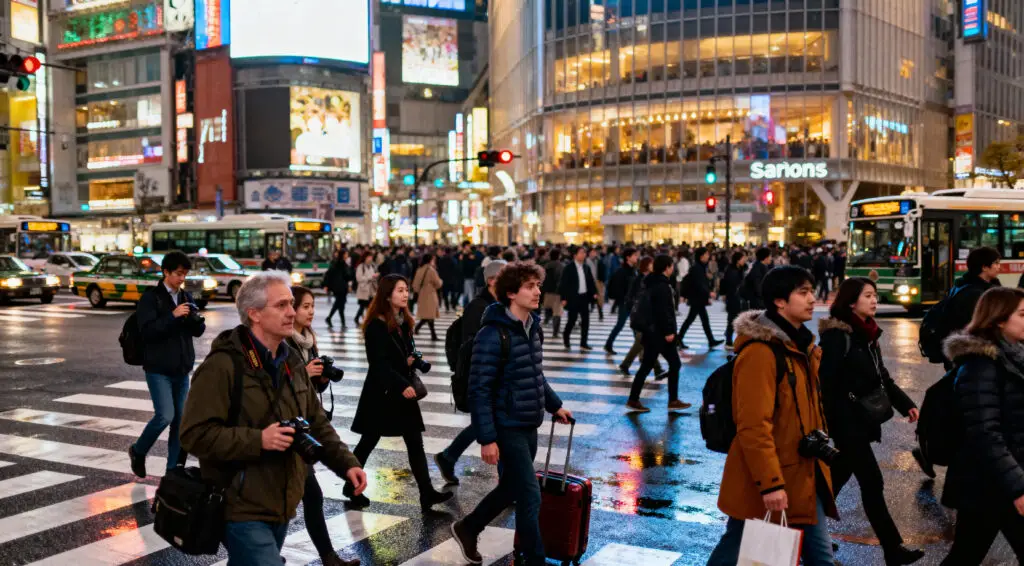Record Visitor Growth Marks Historic Tourism Recovery
Japan’s inbound tourism has posted remarkable performance this year, reaching more than thirty one million arrivals. That sudden surge reflects full scale recovery from pandemic disruption and renewed global interest in Japanese destinations. Visitor spending has also surged sharply, strengthening confidence across accommodation operators, restaurants, and local tourism businesses.
The spike in visitor counts indicates that demand now comes from multiple regions instead of only a few concentrated markets. Financial analysts say spending growth reflects rising income levels among tourists, especially those seeking lifestyle oriented travel experiences. This combination creates ideal conditions for long term tourism sector expansion.
Infrastructure Improvements Strengthen Travel Convenience Nationwide
Japan is rapidly enhancing its tourism infrastructure to support expanding visitor flows across the archipelago. High speed rail reliability, hotel network expansion, and improved regional transit connectivity make travel planning easier and faster. Major destinations like Tokyo and Kyoto therefore operate as central gateways for international travelers.
Rural regions including Okinawa and Hokkaido now benefit from positive spillovers because tourists seek more immersive cultural discovery. Lesser known towns with unique culinary traditions or nature destinations attract new categories of travelers seeking authenticity. This shift also helps distribute tourism revenue beyond the largest metropolitan zones.
International Visitors Seek Diverse Cultural And Scenic Journeys
Tourists are not simply returning for famous landmarks because many already visited pre pandemic. Instead, they now pursue local crafts, specialty cuisine, and regional landscapes shaped by seasonal weather variations. Travelers also enjoy winter snow routes, early spring blossoms, and sunset illuminations in heritage towns.
Some travelers choose Tokyo for nightlife and shopping, while others intentionally combine countryside stays for relaxation. That dual pattern creates hybrid itineraries that allow deeper appreciation of Japanese cultural diversity. The multiplicity of available experiences contributes to rising repeat visit percentages.
Recommended Article: Club Tourism Launches Dedicated Winter Travel Page After Successful HTE2025 Showcase
Travel Surge Unlocks Value For Regional Economies
Local governments benefit because increased tourism activity stimulates small business growth, service employment, and rural product exports. Tourism spending becomes a catalyst for regional renewal because travelers frequently buy local items and traditional crafts. Seasonal attractions, festivals, and historical sites also gain better visibility under nationwide travel momentum.
Authorities now evaluate new funding models to support local tourism infrastructure, balancing economic stimulus with sustainability protection. Coordinated investments help ensure that revenue growth is shared among small communities rather than only large commercial zones. That strategy aligns with long term tourism policy goals for equitable regional uplift.
Capacity Management Challenges Require Planning And Coordination
High visitor density in famous cities creates concerns about infrastructure strain when peak travel cycles collide. Government agencies study traffic flows, visitor clustering patterns, and accommodation saturation to avoid overcrowding. Travel operators recommend early booking to secure preferred itineraries and favorable dates.
Promotional campaigns encourage travelers to explore emerging regional hotspots which retain high quality experiences without congestion. Earlier flight booking, off peak time travel, and staggered planning help maintain smooth tourist mobility. Public private coordination therefore supports balanced distribution during active holiday seasons.
Sustainability Initiatives Reinforce Long Term Destination Value
Japan recognizes that tourism growth must not undermine environmental or cultural heritage protection. New sustainability plans encourage low emission transit, energy efficient accommodation, and community focused experience design. Local regulations also support responsible visitor behavior inside sacred heritage zones and fragile natural landscapes.
Tour operators increasingly highlight sustainability certification as a brand credibility factor for international customers. This improves trust because travelers want to ensure their activities support long term cultural preservation. Strategic stewardship remains essential if growing visitor flows are to continue for future seasons.
Japan Positions Itself As A Leading Global Tourism Destination
International arrivals indicate that Japan ranks among the strongest global travel magnets in 2025. Its blend of modern design, ancient landmarks, and nature aesthetics creates universal fascination among global audiences. Marketing agencies highlight this mixture as unmatched among major travel competitor markets.
With new flight routes, expanded promotional campaigns, and improved local hospitality capacity, tourism growth momentum appears durable. Visitors planning a 2025 journey find abundant choice across cities, mountains, islands, and snow covered countryside. This renewed tourism energy reinforces Japan’s status as a premier destination for global travel enthusiasts.























